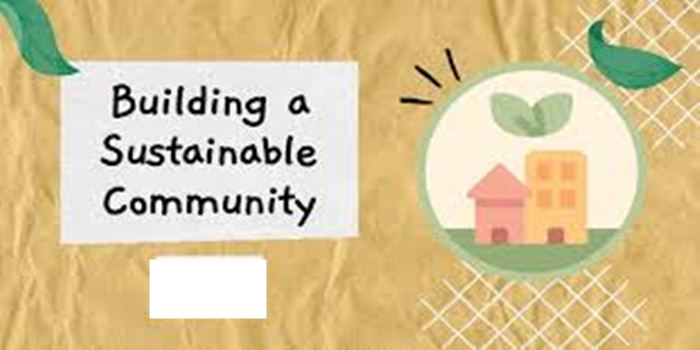In this article, we discussed the meaning of personal sustainability, the characteristics, the examples, we also talked about the benefit.
Definition
Personal sustainability means living in a way that allows you to thrive, both mentally and physically, while also considering the impact on the environment and future generations. It involves prioritizing self-care, setting boundaries, and making conscious choices about your lifestyle to minimize environmental impact and support a sustainable future.
The Characteristics Personal Sustainability:
- Self-Awareness and Self-Care:
Understanding oneself:
This involves recognizing one’s own strengths, weaknesses, and values, as well as understanding how personal dynamics might influence sustainability efforts.
Prioritizing well-being:
This includes physical health, emotional stability, and mental clarity. Sustainable individuals recognize that taking care of themselves is essential for contributing to a sustainable future.
Self-compassion:
Embracing self-compassion allows for resilience in the face of challenges and promotes long-term commitment to sustainability.
- Harmony and Interconnection:
Connecting with nature:
Sustainable individuals appreciate the importance of the natural world and strive to live in harmony with it.
Building strong relationships:
Social connections are vital for creating a sustainable society, and sustainable individuals actively cultivate meaningful relationships.
Embracing interconnectedness:
Recognizing the interconnectedness of all systems, from personal health to global ecosystems, is a key aspect of personal sustainability.
- Values and Actions:
Developing a strong value system:
A clear set of values guides sustainable actions, ensuring that choices align with a vision of a better future.
Prioritizing sustainable behaviors:
This includes making conscious choices in consumption, transportation, and other areas of daily life that minimize environmental impact.
Acting with integrity:
Sustainability is not just about making changes in one’s own life, but also about advocating for systemic changes that promote a more sustainable world.
- Continuous Growth and Learning:
Embracing lifelong learning:
Sustainable individuals are curious and open to new ideas, constantly seeking to expand their knowledge and understanding of sustainability.
Cultivating adaptability:
The ability to adapt to changing circumstances and embrace new challenges is essential for navigating the complexities of a sustainable future.
Fostering resilience:
Resilience allows individuals to overcome setbacks and continue pursuing their sustainability goals even when faced with obstacles.
The Benefits Personal Sustainability:
- Environmental Protection:
Reduced Carbon Footprint:
Sustainable practices like driving less, using energy-efficient appliances, and reducing water consumption minimize greenhouse gas emissions.
Resource Conservation:
Sustainable living encourages the responsible use of natural resources like water, energy, and raw materials, reducing the impact of resource extraction.
Biodiversity Preservation:
Recycling and reducing waste help protect biodiversity by limiting waste in landfills and conserving natural habitats.
Cleaner Air and Water:
By using renewable energy and reducing pollution, sustainable living contributes to cleaner air and water, leading to a healthier environment.
- Health and Well-being:
Improved Respiratory Health:
Walking, biking, and using public transport instead of driving reduce air pollution, which can improve respiratory health and reduce the risk of heart disease.
Stress Reduction:
Engaging with nature through gardening, outdoor activities, and mindful consumption can reduce stress and improve mental well-being.
Increased Physical Activity:
Sustainable lifestyles often involve more physical activity, such as walking, biking, or gardening, which benefits physical health.
- Economic Benefits:
Reduced Energy Costs:
Sustainable practices like energy-efficient appliances, insulation, and renewable energy sources can lead to lower energy bills.
Cost Savings:
Sustainable choices, such as purchasing durable goods, reducing waste, and using public transportation, can help save money over time.
Investment Opportunities:
Investing in sustainable technologies and practices can lead to long-term economic benefits and job creation.
- Social and Community Benefits:
Stronger Community Bonds:
Participating in community initiatives, supporting local businesses, and sharing resources can foster a stronger sense of community.
Increased Social Connection:
Engaging in sustainable activities, such as gardening, composting, or attending community events, can provide opportunities for social interaction and collaboration.
Pro-social Behaviors:
Sustainable practices often involve pro-social behaviors like sharing, giving, and supporting others, contributing to a higher level of social well-being.
Examples of Personal Sustainability:
Energy Conservation: Switching to energy-efficient lighting, unplugging electronics, and using programmable thermostats.
Waste Reduction: Implementing recycling and composting programs, avoiding single-use plastics, and repurposing old items.
Water Conservation: Fixing leaks, installing low-flow fixtures, and using rain barrels.
Sustainable Transportation: Using public transport, carpooling, cycling, or walking.
Reducing Food Waste: Planning meals, storing food properly, and composting food scraps.
Supporting Local Businesses: Buying products and services from local businesses that prioritize sustainability.
Advocating for Change: Contacting elected officials to support policies that promote sustainability.
Conclusion
Personal sustainability encompasses maintaining a lifestyle that supports both individual well-being and the environment. It involves prioritizing self-care, setting boundaries, and making choices that reduce environmental impact. This includes actions like conserving resources, reducing waste, and adopting sustainable practices in daily life.


